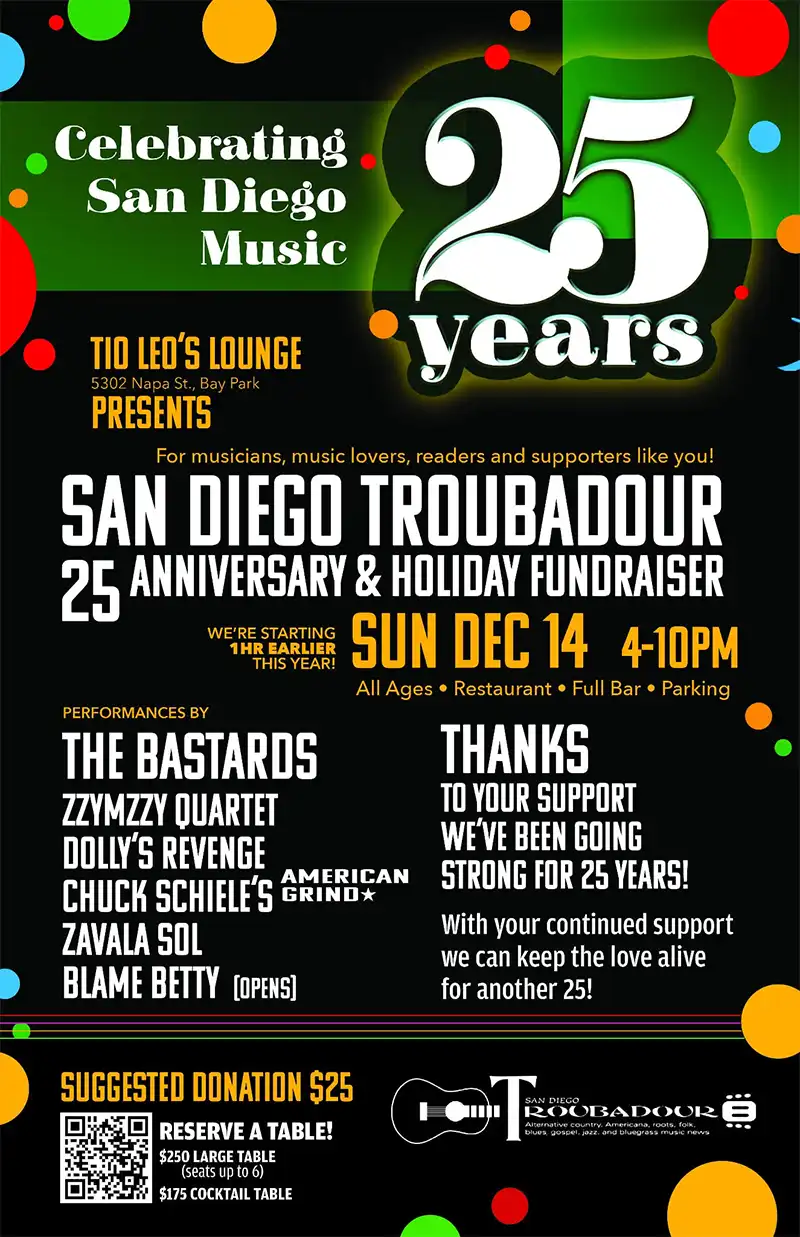Bluegrass Corner
Origins of Bluegrass
Often, people think of bluegrass as a very old, even ancient, music. Its stereotype is of mountain hillbillies in straw hats, cavorting in overalls with an outhouse in the background. Truth be told, bluegrass is a young music, having originated in the 1940s, by practitioners who performed in suits and ties! Let’s take a quick look at the actual history of bluegrass music.
Before the 1940s and going back more than 100 years there was old-time and mountain music practiced primarily in Appalachia. Characterized by Irish and Scottish immigrants and their fiddle music, with a bit of African-American blues, old English folk music, and a smattering of indigenous creativity, this Appalachian music was acoustic and unamplified. Typically, it was played for dancing and was practiced after work on the farm by rural people in the South, ergo the “hoedown,” a tune played after stopping the farm work for the day and putting the hoe down.
Bill Monroe, born and raised in rural Rosine, Kentucky, grew up steeped in this music. He was also heavily influenced by a black blues musician of the era named Arnold Schultz who became his friend. It was Bill Monroe who took this Appalachian mountain music in the late 1930s and ’40s and combined it with the indigenous American blues he learned from Schultz to present a new form of music characterized by hard-driving instrumental virtuosity, high three-part harmony singing, and including strong blues influences, all combined into a new sound. Named after his band — the Bluegrass Boys — this Bill Monroe created music soon came to be known as “bluegrass music.”
This “bluegrass” was characterized by Bill Monroe’s unique, driving mandolin chops as well as by his leads. No one had played the mandolin like Bill Monroe did and he is considered the major innovator of the instrument. Bill’s novel mandolin style was complemented by the brand new three-finger banjo style of his banjo player Earl Scruggs, who brought a whole new sound out of the banjo. As Steve Martin once said, “Before Earl Scruggs no one played the banjo like he did. After Early Scruggs everyone did.” Chubby Wise rounded out the instrumental style with his bluesy, smooth, fiddling style, while honey-voiced Lester Flatt crooned the vocals. Cedrick Rainwater anchored the group with his sold upright bass work. Note, as well, that Bill Monroe, ever the innovator, had a woman in his early band: Sally Ann Forrester.
The Bluegrass Boys band had five acoustic instruments — banjo, mandolin, fiddle, bass, and guitar — which became the standard bluegrass configuration for other bands to follow. Considered the gold standard of bluegrass music, Bill Monroe and his Bluegrass Boys of the 1940s cut several records that remain classics to this day. This was the true origin of bluegrass music, and Bill’s band members typically wore suits and ties in a deliberate attempt to get away from the stereotype of the mountain hillbilly.
Soon, two key members of the Bluegrass Boys left the band to start their own group. Lester Flatt (guitar and lead vocal) and Earl Scruggs (the banjo innovator) left the Bluegrass Boys (much to Bill Monroe’s displeasure) and formed Flatt and Scruggs and the Foggy Mountain Boys. This new group carried on, and expanded, the Monroe tradition, penning and recording many of the now-classic standards of the bluegrass genre in the 1950s and ’60s. From there, the Country Gentlemen, the Kentucky Colonels, the Osborne Brothers, and many others expanded the bluegrass repertoire until the Newgrass movement of the 1970s, which introduced a more modern sound. Bluegrass has always remained true to its Monroe traditions while expanding and evolving to what it is today.
Upcoming Concerts
Here are some upcoming special bluegrass events in San Diego in October. Get out and enjoy one or more of these if you can.
Jerry Douglas presents the Earls of Leicester (a pun on “Earl” of Earl Scruggs fame and “Leicester,” a pun pronounced “Lester” as in Lester Flatt), at the Belly Up Tavern in Solana Beach on Wednesday, October 8. This band is an all-star cast devoted to recreating the original sounds of Flatt and Scruggs from the 1950s. The group features Jerry Douglas, Tim O’Brien, Charlie Cushman, Ronnie McCoury, Shawn Camp, Barry Bales, and Charlie Warren. For tickets and info visit: www.bellyup.com.
Bright Star, at the Old Globe Theater, features the music of Steve Martin and Edie Brickell now through November 2. Tickets and info: www.theoldglobe.org.
Laurie Lewis and the Right Hands at the Del Mar Powerhouse, presented by the Del Mar Foundation, Friday, October 19. For tickets and info: www.delmarfoundation.org.
Kathy Kallick Band at Templar’s Hall in Old Poway Park, Friday, October 24. For tickets and info: www.sdfolkheritage.org.





